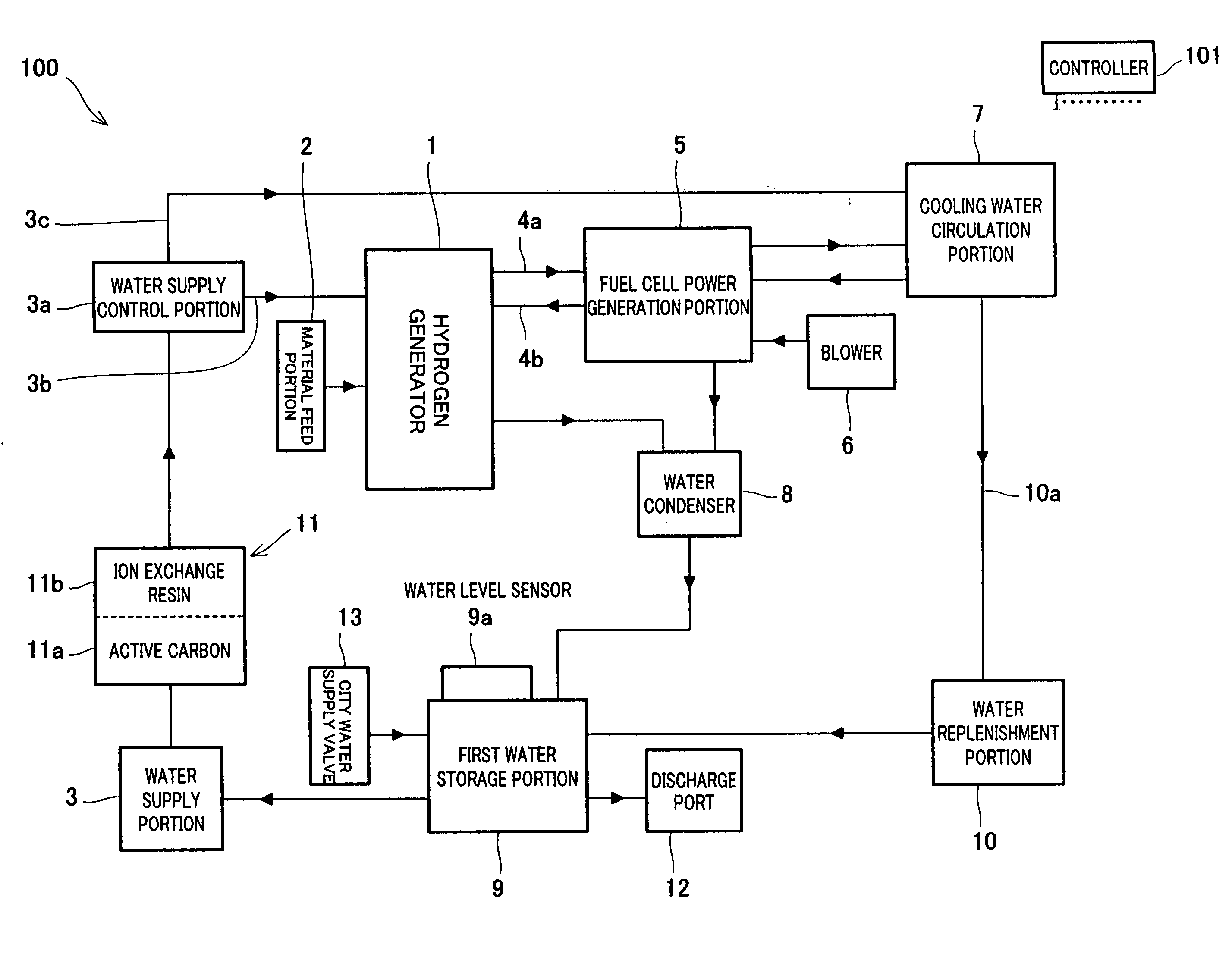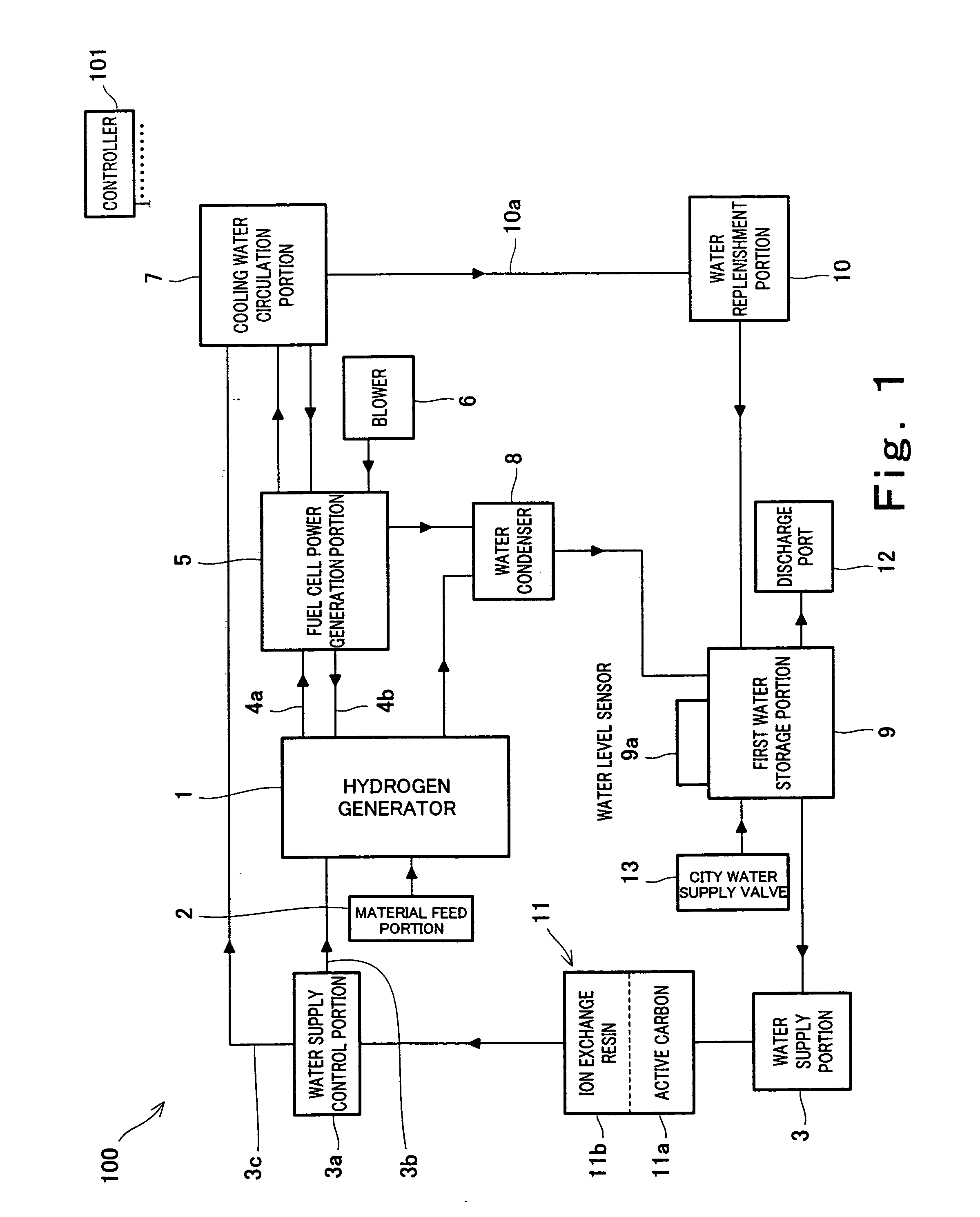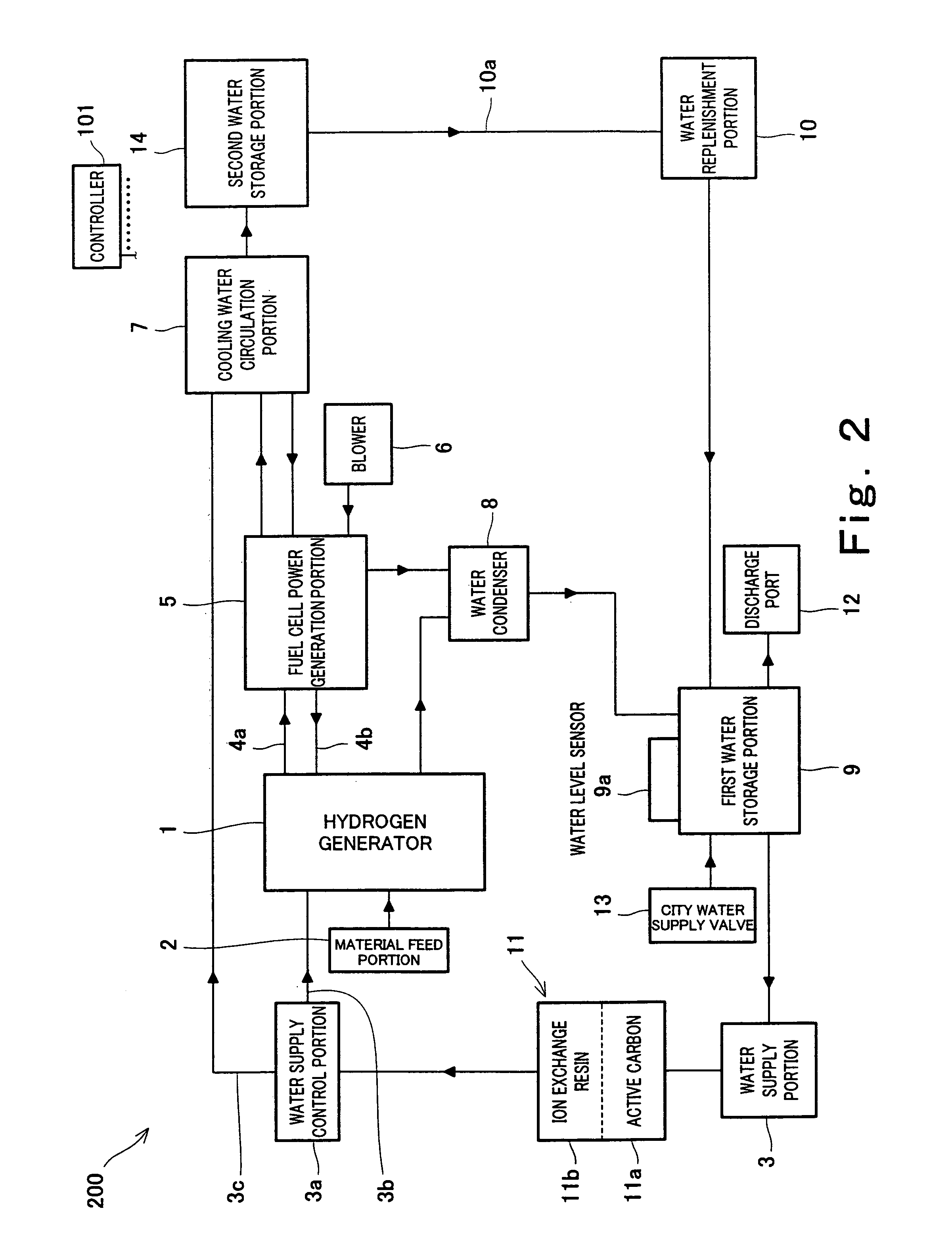Fuel cell system
a fuel cell and system technology, applied in the field of fuel cell systems, can solve the problems of degrading the performance of the fuel cell system, the inability of the hydrogen supply means to generate power in the fuel cell to be equipped as infrastructure, and the degradation of the purification ability of the ion exchange resin or the like with time, so as to reduce the water level, suppress the thermal degradation of the ion exchange resin or the like of the water purifier, and increase the temperature
- Summary
- Abstract
- Description
- Claims
- Application Information
AI Technical Summary
Benefits of technology
Problems solved by technology
Method used
Image
Examples
embodiment 1
[0085] First, a construction of a fuel cell system according to an embodiment 1 of the present invention will be described with reference to the drawings.
[0086]FIG. 1 is a block diagram schematically showing a construction of a fuel cell system according to an embodiment 1 of the present invention. In FIG. 1, solid lines between components of the fuel cell system indicate pipes, and arrows indicated on these solid lines indicate flow directions of water, a reformed gas, and so on, flowing in the pipes, in a normal state.
[0087] As shown in FIG. 1, a fuel cell system 100 of this embodiment includes a hydrogen generator 1. The hydrogen generator 1 is configured to cause a reforming reaction to mainly proceed using a material including an organic compound containing at least carbon and hydrogen, for example, a natural gas, a hydrocarbon component such as LPG, alcohol such as methanol, or a naphtha component, and steam to generate a hydrogen-rich reformed gas. The hydrogen generator 1 ...
embodiment 2
[0122]FIG. 2 is a block diagram schematically showing a construction of a fuel cell system according to an embodiment 2 of the present invention. In FIG. 2, solid lines extending between the components in the fuel cell system indicate pipes, and arrows on the solid lines indicate flow directions of water, a reformed gas, and so on, flowing in the pipes. In FIG. 2, the same components as those of the fuel cell system 100 of the embodiment 1 are identified by the same reference numerals.
[0123] As shown in FIG. 2, a fuel cell system 200 of this embodiment includes components substantially identical to those of the fuel cell system 100 of the embodiment 1. The construction of the fuel cell system 200 of this embodiment is identical to the construction of the fuel cell system 100 of this embodiment 1 except that a second water storage portion 14 is disposed at a location of the water replenishment passage 10a coupling the cooling water circulation portion 7 to the water replenishment po...
embodiment 3
[0128]FIG. 3 is a block diagram schematically showing a construction of a fuel cell system according to an embodiment 3 of the present invention. In FIG. 3, solid lines extending between the components in the fuel cell system indicate pipes, and arrows on the solid lines indicate flow directions of water, a reformed gas, and so on, flowing in the pipes. In FIG. 3, the same components as those of the fuel cell system 100 of the embodiment 1 are identified by the same reference numerals.
[0129] As shown in FIG. 3, a fuel cell system 300 of this embodiment includes components substantially identical to those of the fuel cell system 100 of the embodiment 1. The construction of the fuel cell system 300 of this embodiment is identical to that of the fuel cell system 100 of the embodiment 1 except that a cooler 15 is disposed at a location of the water replenishment passage 10a coupling the cooling water circulation portion 7 to the water replenishment portion 10, and a water temperature d...
PUM
| Property | Measurement | Unit |
|---|---|---|
| temperature | aaaaa | aaaaa |
| temperatures | aaaaa | aaaaa |
| temperature | aaaaa | aaaaa |
Abstract
Description
Claims
Application Information
 Login to View More
Login to View More - R&D
- Intellectual Property
- Life Sciences
- Materials
- Tech Scout
- Unparalleled Data Quality
- Higher Quality Content
- 60% Fewer Hallucinations
Browse by: Latest US Patents, China's latest patents, Technical Efficacy Thesaurus, Application Domain, Technology Topic, Popular Technical Reports.
© 2025 PatSnap. All rights reserved.Legal|Privacy policy|Modern Slavery Act Transparency Statement|Sitemap|About US| Contact US: help@patsnap.com



